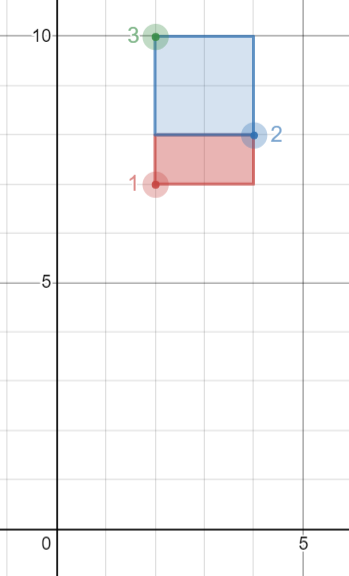Table: Points
+---------------+---------+ | Column Name | Type | +---------------+---------+ | id | int | | x_value | int | | y_value | int | +---------------+---------+ id is the primary key for this table. Each point is represented as a 2D coordinate (x_value, y_value).
Write an SQL query to report all possible axis-aligned rectangles with a non-zero area that can be formed by any two points from the Points table.
Each row in the result should contain three columns (p1, p2, area) where:
p1andp2are theid's of the two points that determine the opposite corners of a rectangle.areais the area of the rectangle and must be non-zero.
Return the result table ordered by area in descending order. If there is a tie, order them by p1 in ascending order. If there is still a tie, order them by p2 in ascending order.
The query result format is in the following table.
Example 1:
Input: Points table: +----------+-------------+-------------+ | id | x_value | y_value | +----------+-------------+-------------+ | 1 | 2 | 7 | | 2 | 4 | 8 | | 3 | 2 | 10 | +----------+-------------+-------------+ Output: +----------+-------------+-------------+ | p1 | p2 | area | +----------+-------------+-------------+ | 2 | 3 | 4 | | 1 | 2 | 2 | +----------+-------------+-------------+ Explanation: The rectangle formed by p1 = 2 and p2 = 3 has an area equal to |4-2| * |8-10| = 4. The rectangle formed by p1 = 1 and p2 = 2 has an area equal to |2-4| * |7-8| = 2. Note that the rectangle formed by p1 = 1 and p2 = 3 is invalid because the area is 0.
